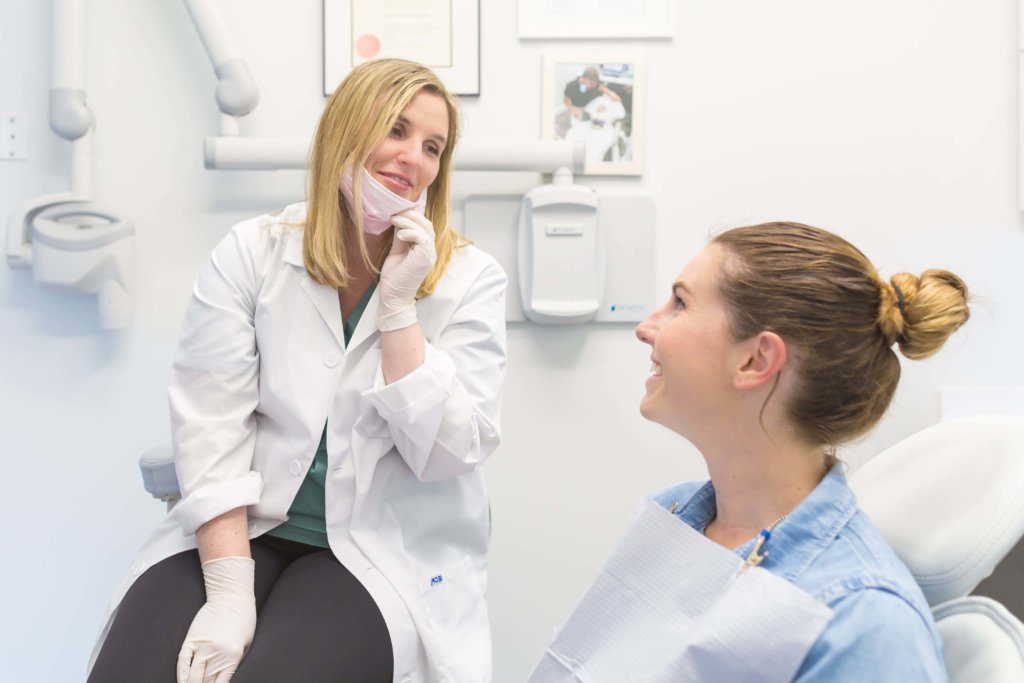
Orthodontics is a specialized area of dentistry that focuses on treating irregularities in alignment and occlusion (bite) of the teeth and jaws, often incorporating appliances such as braces to shift them into a more ideal position.
An orthodontist is a dentist who has gone through additional schooling on helping patients with dental alignment and bite problems, as well as training on fitting patients with corrective braces and other orthodontic appliances. If you need orthodontic treatment, you should always choose an orthodontist, not a general dentist.
Orthodontic treatment makes permanent changes to your teeth and sometimes even the shape of your face, so it’s crucial that only an orthodontist addresses these changes. They have the education, training, and experience to provide their patients with the right results.
While general dentists often refer their patients to a trusted orthodontist, you do not need a dentist referral in order to schedule your initial consultation with us.
If you are interested in orthodontic treatment for yourself or your teenager, give us a call at (619) 464-1771 or email us to set one up. Our front office staff will be happy to schedule one for you and they will request some basic information from you.
An initial orthodontic consultation is a fact-finding appointment. You will fill out some light paperwork to help Dr. Rafo and Dr. Wright understand your oral health history and get a good idea of your treatment goals. Dr. Rafo and Dr. Wright will take x-rays to get a complete picture of what’s going on in the patient’s mouth unless the patient can provide recent x-rays from the general dentist. Dr. Rafo and Dr. Wright will then perform an examination of the mouth to see how the teeth align and perform.
Once all the information has been gathered, it will be time to start discussing treatment options, including an estimation of how long the treatment will take and a quote of the cost of treatment. If the appointment is for a minor child, a parent or legal guardian must be present.
Unfortunately, no. In fact, teeth tend to grow more crooked with age, not less. Biting down with poorly aligned teeth can encourage them to shift even farther from their ideal position.
The length of treatment depends on each patient’s orthodontic problems, but it will typically range from eight months to two and a half years. The best way to have the shortest possible treatment time is to follow Dr. Rafo and Dr. Wright instructions exactly.
Appointments vary depending on the patient’s needs, but most patients with braces will come in every four to six weeks.
After orthodontic visits, particularly ones involving adjustments to braces, your teeth may be sore for a few days as they get used to the change. Advil or Tylenol can ease the discomfort. Wires and brackets may sometimes rub against the inside of the cheeks and create soreness, but we can trim wires when necessary, and orthodontic wax is a great solution as well.
No patient is too old to wear braces! In fact, a quarter of all orthodontic patients are out of their teens, so don’t feel like you missed your chance for straight teeth just because you didn’t get braces in high school!
The only difference between brushing with braces and without is that there are a lot more nooks and crannies for food to get stuck and plaque to build up. Be very thorough as you brush and don’t forget to floss!
The American Association of Orthodontics recommends age seven as the ideal time to get an initial orthodontic screening. By this age, adult teeth will have begun to come in, which allows us to evaluate how much room there is and if everything is coming in where it should.
If a bracket breaks, you should call our office right away to schedule an emergency appointment. We can usually find time to reattach or replace the bracket quickly. Do not wait until your next regular appointment to do something about a broken bracket, as this could have a negative effect on your treatment.
Some of the foods you should avoid while your braces are on include ice, hard candy, raw vegetables, and all sticky foods (such as caramel and taffy). Instead of eating apples and corn on the cob, you’ll have to stick to apple slices and kernel corn. Eating banned foods is the easiest way to break a bracket, but it can also harm your teeth.
Absolutely! Regular dental checkups are always important, especially while you have braces. Your dentist will let you know how often to come in during your orthodontic treatment.
Here at Saint Orthodontics, we accept most insurance and PPO plans, but check with us to make sure yours is included. Call our office at (619) 464-1771 for more information about insurance. Make sure you have your insurance information handy when you call. Also, plan to pay your co-pay or deductible portion at the time of service.
For your convenience here at Saint Orthodontics, we accept cash, check, cashier’s checks, debit cards, and all major credit cards. If you have any more questions regarding payment methods, please give us a call at (619) 464-1771 and we’ll do our best to find the right solution for you.
